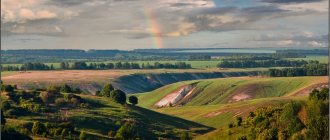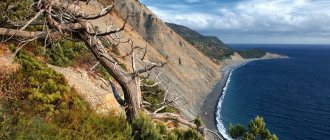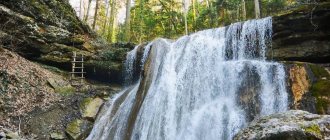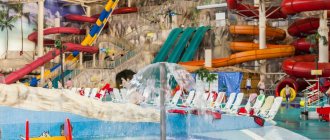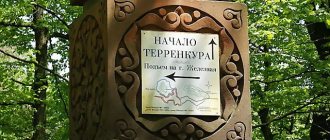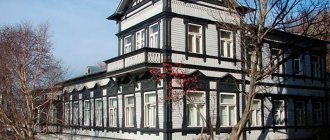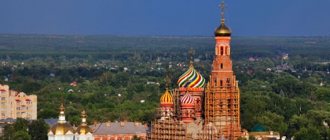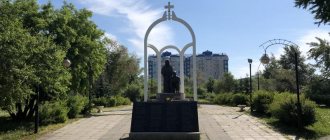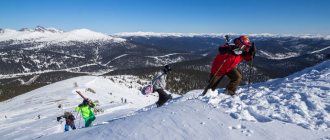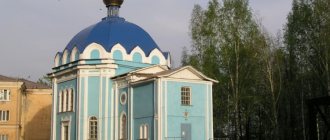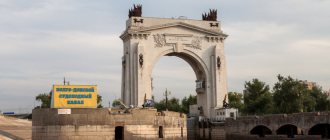A few kilometers south of Anapa on the Abrau Peninsula is the Utrish Nature Reserve , which combines the former Big and Small Utrish reserves. This place attracts tourists with its rich natural diversity, clean mountain air, clear water and beautiful beaches and lagoons. These places are most valued by lovers of wild holidays, because, despite the sufficient number of tourists coming from Anapa, here you can find a secluded corner on the seashore surrounded by pristine nature, where rarely anyone goes.
What's the best way to get there?
The protected area is located 16 kilometers south of Anapa.
You can get there by sea boat departing daily from Anapa, by private car , by regular bus or by minibus departing from the city to the village of Sukko. But if you came specifically for the purpose of ecotourism and are going to spend more time in the reserve, you can settle in the village itself or in the village of Durso, which is located on the southern border of the reserve.
The price of accommodation in the private sector ranges from 300 to 400 rubles per day per person. By the way, this is a great option for those who prefer a more relaxing holiday. The beaches are clean and well-groomed, and prices in local restaurants, cafes and canteens are more affordable than in the resort of Anapa. The villages have water attractions, so you can ride a boat or a banana boat here too. In addition, there are many dolphins here that swim very close to people.
The beaches of the reserve and the village of Sukko are pebbly, the seabed is sandy.
Snake Bay
800 meters north of the village is Zmeinaya Bay, on the site of which there used to be a lake called Zmeiny, because there were many snakes in it. When the narrow isthmus separating the lake from the sea was blown up, a bay was formed.
Juniper forests grow along its banks, the depth of Snake Lake reaches eight meters, and the area is 22 hectares.
In Zmeinaya Bay there is a parking lot for sailing and motor yachts, and everyone can rent a boat and go on a trip to the open sea.
Visiting the reserve: reception hours, ticket prices, promotions and discounts
Visit to the Utrish Nature Reserve from 09:00 to 18:00. Days off: Saturday and Sunday.
Tourist routes are only allowed to be visited if accompanied by a guide, for which a preliminary application must be made. The optimal group consists of 10-15 excursionists. You can check prices for visiting excursion routes, information about discounts and special offers from the administration of the reserve.
Important! Visitors are prohibited from:
- collect mushrooms, berries, flowers, minerals, as well as break branches of trees and bushes;
- frighten the inhabitants of the reserve, lead domestic animals away, destroy nests and burrows, make noise and litter;
- damage signs, violate the integrity of the soil cover and start a fire in places not intended for this purpose.
Types of landscapes of the reserve
There are three main types of landscapes on the territory of the reserve:
- Open woodlands and sub-Mediterranean forests with a predominance of pistachio-juniper, oak-juniper and juniper thickets. The woodland is represented by ash, hornbeam, oak and shiblyak thickets.
- Mesophytic broad-leaved forests are found in the Utrish Nature Reserve. Prominent representatives of this type of vegetation are oak, linden, ash, pine and hornbeam, which prefer rocky terrain.
- The third type of landscape relief is coniferous forests.
There are about 89 species of microlandscapes in the reserve, which are grouped into 5 genera and 3 types. This:
- ecotone;
- sub-Mediterranean;
- steep.
The diversity of the landscape structure is characterized by a large dissection of land, a variety of slopes, and specific relief forms that were formed as a result of seismic-gravitational processes in different periods of history.
The complication of the structure is also determined by the activity of gravitational processes that have taken place in our days - the influence of the sea and landslide-talus elements.
Plants and animals of the Utrish Nature Reserve
On the territory of the reserve there is vegetation characteristic of both the Mediterranean zone and the high and low mountain zones, as well as representatives of the flora found in other parts of Russia.
- The forests consist of oak, hornbeam, ash, linden, maple, as well as pistachio and juniper. There are also separate forest areas where only Pitsunda pine, downy oak or juniper grow.
- The marine flora consists of more than 200 species of algae.
- Among the representatives of the fauna, the Mediterranean tortoise should first be highlighted, the protection of which is given special attention here.
- Among the invertebrates, it is worth highlighting a rare species of praying mantis - the striped empusa, as well as the steppe grasshopper - the largest grasshopper in Russia, the female body length of which is 7-11 centimeters. There are 94 species of insects in the reserve, 13 of which are endemic and listed in the Red Book of Russia. In forests and on rocks you can see the Aesculapian snake, reaching 2 meters in length.
- Of the birds , of which there are more than 140 species in the reserve, the predominant species are black vulture, short-tailed snake eagle, peregrine falcon, white-tailed eagle and vulture. The mute swan, as well as 80 species of other waterfowl and semi-aquatic birds, come here for the winter.
- Of the larger animals on the territory of Bolshoy and Maly Utrish you can find deer, roe deer, wild boar, jackal, fox, raccoon and hare.
- In the waters of the reserve there are schools of anchovy, mackerel and horse mackerel, which attract many dolphins.
The Mediterranean turtle is a protected species in the Utrish Nature Reserve.
Dolphinarium
The Utrish Dolphinarium is the only one on the Black Sea where marine animals perform directly in the Black Sea lagoon; there are also mesh enclosures in which marine animals are kept.
The spectator stands are located in the open air and in the high season there are two to three performances a day, and in the off-season there is one performance each. Bottlenose dolphins, fur seals and a sea lion perform for visitors.
Read more about the dolphinarium >>
Sights of the Utrish Nature Reserve
- Dolphinarium . The Anapa Dolphinarium is located here, where interesting performances with the participation of these friendly marine mammals are held. There is also another dolphinarium, which is not similar to traditional objects of this kind. This is a fenced area of the sea where dolphins are in their natural habitat, so they are more playful. For people suffering from neurological disorders and simply wanting to relieve stress, dolphin therapy sessions are held.
- Lighthouse . Built in the 1970s, the lighthouse still performs its direct functions. There is also a chapel nearby. But tourists are attracted here by the beautiful panorama of the surrounding area, opening from the hill.
- Diving . Vacationers have the opportunity to scuba dive underwater to observe the rich fauna and flora of the reserve’s waters in clear water. Dolphins can often be seen hunting underwater.
- Yacht Club . In Bolshoy Utrish you can take an unforgettable boat trip on a yacht or boat, during which you can not only admire the beautiful views, but also swim in the clear sea, as well as go fishing.
- Pearl Waterfall . The most popular of all the waterfalls in the reserve. The water here falls from the mountains directly onto the beach. Therefore, the waterfall is not only a kind of natural hydromassage, but also a place where you can wash yourself off the salty sea water or just freshen up if you don’t want to swim in the sea.
- Lake Sukko . A picturesque lake surrounded by forest. It is noteworthy that in the middle of it there are swamp cypresses, between which tourists like to sail by boat.
- Beaches and lagoons . Pebble beaches are one of the main attractions of the Utrish Nature Reserve. The clearest water and picturesque sea harbors attract tourists here from the crowded beaches of Anapa. Also, the coast of the Utrish nature reserve has become popular with nudists, who have set up several wild beaches here.
Zhemchuzhny Waterfall is one of the most popular attractions of the reserve.
Natural masterpieces on excursion
Along the beautiful Black Sea coast of the Krasnodar Territory there are many blue lagoons, cozy quiet bays, majestic mountains and forests full of fresh breath, attracting thousands of tourists on excursions. The Bolshoi Utrish Nature Reserve is no exception and constantly delights the eyes of visitors. Reviews of local beauties and unique natural creations scattered to all corners of the Russian Federation and neighboring countries. What is the value of Snake Lake, adjacent to it from the north?!
One of its attractions is deservedly the Pearl Waterfall. The height of the falling streams here reaches about 5 m, and it is located on the Vodopadny stream. The peculiarity is that the crystal clear water quickly flies off, hits the numerous stones of the pebble beach and, bending around small pebbles, flows directly into the salty Black Sea. It is the westernmost waterfall in the Krasnodar region. One of his virtuous functions is to provide “spiritual services” for savages who came to admire and conquer pristine nature. There are no villages nearby, as a result of which its water surprises with its transparency.
The presence of five amazingly mesmerizing lagoons contribute to the uniqueness of these places. They are home to wild and nudist beaches, which attract those who like to relax without clothes and spend time without amenities, who want to feel complete freedom and peace in the company of nature. The unique juniper-pistachio forest, which stretches between the second and third bays, according to the unanimous verdict of experts, is called the magnificent ecological value of these lands. But on its territory it is planned to build a sports and recreation complex.
History of the creation of the Utrish State Nature Reserve
The idea of creating a protected area began to be discussed in scientific circles and the public environment since the late 80s of the last century. However, the government decree on the formation of the reserve was issued only in 2001 . According to the government plan, the Utrish nature reserve was to be opened in 2010. The work began in 2008 and, despite some obstacles (in particular, due to the confrontation between the authorities and the public regarding the construction of the road in protected areas), it was completed on time.
Cypress Lake is a favorite vacation spot for visitors to the reserve.
Monument-lighthouse
Along the artificial lintel you can go to the lighthouse monument, erected in 1975 in honor of all the sailors who fought on the Black Sea in 1942–1943.
In this place, in March 1942, a warship named after the Civil War hero Jan Fabricius was blown up by an underwater mine and washed ashore. For three months, the ship's crew remained at the combat post in the half-submerged ship, continuing to fire at fascist planes, and only by order of the command did the soldiers join the defenders of Novorossiysk.
The old lighthouse was installed at the end of the 19th century, and in the late 1990s a small chapel was built inside it.
Video of the Utrish Nature Reserve
Interesting video about the Utrish Nature Reserve.
https://www.youtube.com/watch?v=e9dUEwWVqPI
Having visited these wonderful places, you will probably want to come here again. And stay not in Anapa, but directly in the private sector of the village of Sukko or in the new tourist complex "Utrish", built according to modern standards, surrounded by juniper forest. After all, many vacationers come to the conclusion that it is better to relax closer to nature, making short forays into restaurants and nightclubs in Anapa, and not vice versa. However, whoever likes what.
History: the thorny path of origin
A long path of formation and development preceded the opening of the reserve. Making this area of vast Russia environmental protection arose at the end of the 20th century. All the scientific minds in this area, with their calls, achieved the birth of the reserve in 2000. However, the administration of the Novorossiysk region did not support the existing project, and as a result of the lack of persistence of the State Committee, it was completely rejected.
But the following year, the Russian government issued a decree on the creation of a territory controlled and protected by the state. After 8 years, part of the potential reserve was destroyed, as they began to lay a road through it. Only through joint efforts were locals and scientists able to prevent the current construction. The official date of birth of “Big Utrish” is considered to be September 2, 2010.
Relief and climate
The nature of the Utrish Nature Reserve is characterized by phenomena related to its geographical location. A fascinating fragment of the Krasnodar region lies in the dry subtropical belt (in the so-called sub-Mediterranean climate). In winter, the most common temperature mark is +2C. In July it rises to +25C. Precipitation is normal. The maximum occurs from November to February. The minimum is at the end of July and August. Thunderstorms are recorded throughout the year. And in large quantities. Storms come in the last days of August and make themselves felt throughout September. Rarely.
The relief of the protected area is a series of low ridges parallel to each other on a “basic” asymmetrical structure stretched along the Black Sea (the height increases from northwest to southeast). In the northwestern neighborhood of the buffer zone, the GZ is the official beginning of the Caucasus Mountains (the point is not protected, there is a monument there that attracts crowds of vacationers). The formations in question are clearly affected by erosion. The rivers of the Utrish Nature Reserve also diversify the orography of this corner with their wonderful valleys. The steepness of these slopes ranges from ravines of no more than 7 degrees to sheer rocky cliffs with little or no coastal edges. The highest point of the protected area is Mount Orel in the southeast (almost 549 m above sea level).
The soils of the small ridges descending towards the Riviera lie on solid (geological) material. It is composed of flysch (alternating mineralogical layers of different sedimentary origin). Flysch layers dip monoclinally towards the sea. Podzols, podzolized classic brown forest soils, brown and, finally, turf soils have already formed on them. They variegatedly intersect with each other under the complex tectonics of the designated peninsula. However, we note here that brown forest formations are formed exclusively under broad-leaved relict arboretums.
Goals and objectives
The activities of the Utrish Nature Reserve are based on four areas:
- protection of security and closed (for tourists) nickels from any impact;
- further scientific work (identification of new taxa in flora and fauna, etc.);
- state registration (monitoring the number of individuals and plants in the landscape);
- work related to the popularization of the massif itself and the biotope within it...
